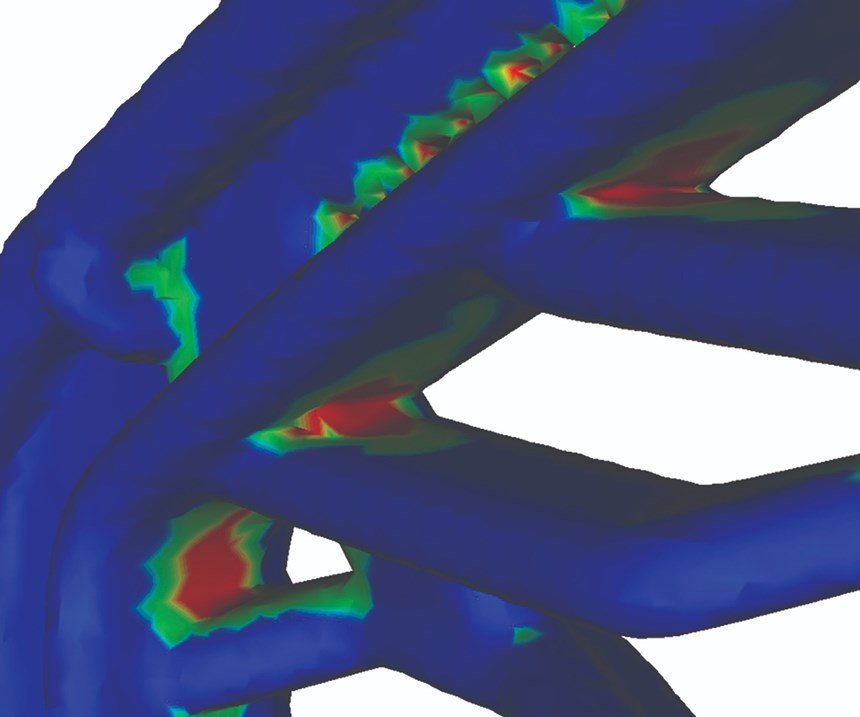Software Helps Ford Design for Plating Quality
The automaker says Elsyca PlatingManager software has enhanced its production process.
LaRon Michelle Brown, a technical specialist at Ford Motor Co., says her experience with Elsyca PlatingManager software has enhanced the automaker’s production process. The software is graphical simulation platform for analyzing the production performance and quality of electroplating processes. Simulations are made using a virtual mock-up of an in-house plating line, and detailed layer-thickness and quality results are available for every part on the rack and for every plating step.
“Using Elsyca as an indicator of a Tier-One’s capability to plate a new design concept, while providing recommendations to the studio to design a manufacturable feasible component, is truly beneficial in efforts to mitigate warranty,” Brown says.
Elsyca’s software is a proactive approach to continuous improvement that the Body Exterior Core Engineering group at Ford embraces.
“It is used as a methodology to design for quality in advance, instead of reacting to quality concerns during production or excessive warranty,” she says. “Customer perception of quality and customer satisfaction is important to every OEM. Reducing the customer exposure to defects increases customer satisfaction while reducing cost to the OEM and the OEM Tiers responsible for component quality.”
Prior to mainstream usage of this software for plating analysis, many OEM Tiers conducted design of experiment (DOE) to determine the proper plating line setup needed to produce parts that meet OEM specification. Plating DOEs are disruptive to the manufacturing production line, Brown says, and they also can be time-consuming, which makes them inefficient and results in costly prototype rack design configurations.
Robrecht Belis, Elsyca’s manager for surface finishing and electrocoating, says PlatingManager streamlines this process and allows the plating Tier to conduct multiple rack optimization configurations to precisely understand throughput and provide more accurate quoting.
“The most important advantage of Elsyca software is the simulation can predict with 90-95 percent confidence the plating thickness on any area of any part on the plating rack,” he says. “This is significant to understanding part design, size and geometry effect on rack density and the ability to plate within specification.”
Brown says PlatingManager offers multiple benefits for the Tier-One, including providing useful analytical data to use during the design phase and discussions with the studio. For example, the software shows the impact of design on platebility, serving as a guide to provide studio engineers direction on flange depth, geometry, depth ratio, radii and height ratios, among other factors.
At Ford, PlatingManager reports and feedback are given to the D&R engineer and supplier so that design concerns can be conveyed upfront to the studio engineer and they can work together collaboratively to design a component that will meet minimal plating requirements
“Now, we no longer have to rely on industry experience to communicate design challenges,” Brown says. “We will have computer-aided engineering analytical data that provides the documentation to support design modifications, not only for aesthetics but for a robust, quality part. I love it.”
For information on Elsyca PlatingManager, visit elsycaplatingmanager.com.
Related Content
-
How to Choose Between Sulfate and Chloride-Based Trivalent Chromium
There are several factors to consider when choosing between sulfate and chloride-based baths for trivalent chromium plating. Mark Schario of Columbia Chemical discusses the differences and what platers should keep in mind when evaluating options.
-
Trivalent Chrome Overview
As the finishing industry begins to move away from the use of hexavalent chromium to trivalent chromium, what factors should finishers consider as they make new investments? Mark Schario, chief technology officer for Columbia Chemical offers a helpful overview of this complicated topic.
-
Products Finishing Reveals 2024 Qualifying Top Shops
PF reveals the qualifying shops in its annual Top Shops Benchmarking Survey — a program designed to offer shops insights into their overall performance in the industry.














.jpg;maxWidth=300;quality=90)


